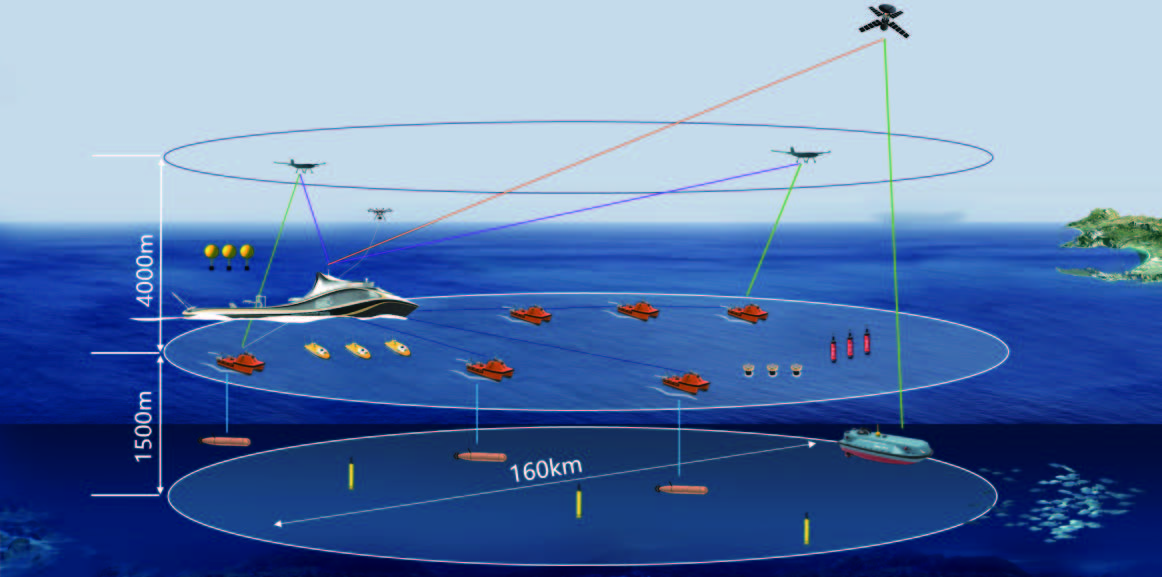
Electricity-generating mechanism of the molecular thermal motion harvester (MTMH).
Credit: Yucheng Luan and Wei Li
There is power in numbers when generating electricity from the movement of molecules
Wave energy technology is a proven source of power generation, but there is power inherent in every molecule of liquid on earth, even when the liquid is at rest. At the molecular scale, atoms and ions are always moving. If this nanoscale movement can be harvested, it could be a big source of energy.
“There are vast amounts of air and liquid on the earth, and their successful harvesting could produce a gigantic amount of energy for society,” author Yucheng Luan said.
In an article published this week in APL Materials, by AIP Publishing, Luan and his collaborators tested a molecular energy harvesting device that captures the energy from the natural motion of molecules in a liquid. Their work showed molecular motion can be used to generate a stable electric current.
To create the device, the researchers submerged nanoarrays of piezoelectric material in liquid, allowing the movement of the liquid to move the strands like seaweed waving in the ocean, except in this case the movement is on the invisible, molecular scale, and the strands are made of zinc oxide. The zinc oxide material was chosen for its piezoelectric properties, which means that when it waves, bends, or deforms under motion, it generates electric potential.
“As a well-studied piezoelectric material, zinc oxide can be easily synthesized into various nanostructures, including nanowhiskers,” Luan said. “A nanowhisker is a neat and orderly structure of many nanowires, similar to the bristles on a toothbrush.”
Their energy harvesters could be used to power nanotechnologies like implantable medical devices, or they could be scaled to full-size generators and kilowatt-scale energy production. One key design feature of the device is that it doesn’t rely on any external forces, which increases its potential as a game-changing clean energy source.
“Molecular thermal motion harvester devices do not need any external stimulation, which is a big advantage compared with other energy harvesters,” Luan said. “At present, electrical energy is mainly obtained by external energy, such as wind energy, hydroelectric energy, solar energy, and others. This work opens up the possibility of generating electrical energy through the molecular thermal motion of liquids, from the internal energy of the physical system that is essentially different from ordinary mechanical motion.”
The authors are already working on the next phase of their design to improve the energy density of the device by testing different liquids, high-performing piezoelectric materials, and new device architectures and by enlarging the device.
“We believe this novel kind of system will become an indispensable way for human beings to obtain electrical energy in the near future.”
Original Article: Harnessing Molecular Power: Electricity Generation on the Nanoscale
More from: Nankai University
The Latest Updates from Bing News
Go deeper with Bing News on:
Molecular thermal motion harvester devices
- More efficient molecular motor widens potential applications
Light-driven molecular motors were first developed nearly 25 years ago at the University of Groningen, the Netherlands. This resulted in a shared Nobel Prize for Chemistry for Professor Ben Feringa in ...
- “Drinking Bird” Becomes an Evaporation-Driven Triboelectricity Energy Harvester
Researchers combined the drinking bird toy with a triboelectric arrangement to create a high-voltage energy-harvesting scheme.
Go deeper with Bing News on:
Molecular energy harvesting
- Imperial Academic Secures €2.4m European Funding to Enhance Solar Harvesting Technology
Professor Jenny Nelson has won a prestigious European Research Council grant to learn lessons from plants and apply them to solar technologies.She will use the grant to unpick how plants convert ...
- What’s that?…A fuel cell that harvests energy from…dirt?
A soil microbial fuel cell where microbes in dirt could power applications which are literally “in the field”.
- More efficient molecular motor widens potential applications
Light-driven molecular motors were first developed nearly 25 years ago at the University of Groningen, the Netherlands. This resulted in a shared Nobel Prize for Chemistry for Professor Ben Feringa in ...
- OCOchem Advances Hydrogen Formate Electrolyzer Process By 10x To Create World’s Largest Industrial Scale CO2 Electrolyzer Cell
OCOchem Advances Hydrogen Formate Electrolyzer Process By 10x To Create World’s Largest Industrial Scale CO2 Electrolyzer Cell ...
- How do birds flock? Researchers do the math to reveal previously unknown aerodynamic phenomenon
In looking up at the sky during these early weeks of spring, you may very well see a flock of birds moving in unison as they migrate north. But how do these creatures fly in such a coordinated and ...










